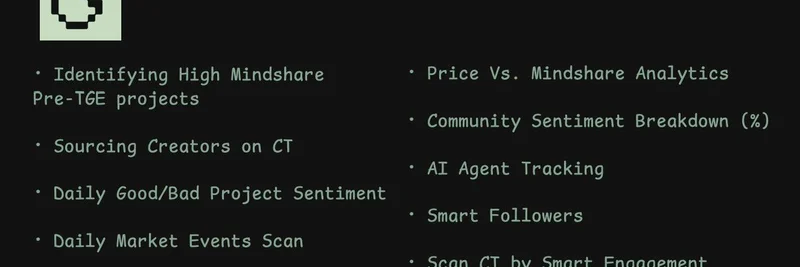In the fast-paced world of crypto, where innovation moves at lightning speed, recent announcements from fintech giants Stripe and Circle have ignited a firestorm of discussion. These companies, known for their dominance in payments and stablecoins, are rolling out their own Layer-1 (L1) blockchains—Stripe's Tempo and Circle's Arc. But why now, and what does it mean for the broader ecosystem? A thought-provoking post on X (formerly Twitter) from user @QwQiao captures the sentiment perfectly, highlighting how distribution might be the real king in this game.
@QwQiao's post, which quickly gained traction with over 15,000 views, reads: "saw a lot of cope on the tl about stripe/circle launching their own l1 im actually surprised it took them this long to announce their own l1. why would u leak value and lose control to another chain when u already own the distribution? have argued for a long time that chains have little moat relative to the distribution layer." Here, "cope" refers to the denial or rationalization some in the crypto community use to downplay big news, while "tl" means timeline on X. An L1 blockchain is the base layer of a network, like Ethereum or Solana, handling core security and consensus.
This perspective resonates because Stripe and Circle aren't just dipping their toes into crypto—they're diving in headfirst. Stripe, valued at around $92 billion, is building Tempo in stealth mode with crypto VC firm Paradigm. It's designed for high-performance payments, compatible with Ethereum's virtual machine (EVM), meaning developers can easily port apps over. This follows Stripe's acquisitions of stablecoin startup Bridge for $1.1 billion and wallet firm Privy, signaling a push toward owning the entire payments stack. Meanwhile, Circle's Arc is an open L1 tailored for stablecoin finance, using USDC as its native gas token for predictable, dollar-denominated fees. It's set for a public testnet this fall, promising sub-second settlements and privacy features.
The key insight from @QwQiao? Distribution is the ultimate moat. In crypto terms, a "moat" is a competitive advantage that's hard to replicate, like network effects or liquidity. But for companies like Stripe, with millions of merchants, or Circle, issuer of the second-largest stablecoin USDC (with over $65 billion in circulation), their real power lies in user access and integration. Why rely on Ethereum L2s (Layer-2 scaling solutions like Optimism or Arbitrum) or rivals like Solana when you can build your own chain and keep the value in-house? This avoids "leaking value," where fees or control go to third-party networks.
Replies to the thread echo this debate, showing a split in the community. One user, @l3olanza, argues that walled gardens could backfire: "Their walled gardens will cost them. The product is stablecoins but stablecoins want to interact with other things such as DeFi, RWA, dapps etc." DeFi means decentralized finance, RWAs are real-world assets like tokenized bonds, and dapps are decentralized apps. He compares it to big companies selling on Amazon for network effects. Another, @SamAltcoin_eth, emphasizes Ethereum's "credible neutrality" as a moat, pulling everything toward its L2s.
This ties into broader implications for meme tokens, which thrive on viral distribution and liquidity. Meme coins like Dogecoin or newer ones on Solana often explode due to community hype and easy access. If Stripe and Circle's L1s succeed, they could fragment liquidity, making it harder for meme projects to bootstrap on unified chains. However, they might also onboard millions of normies (non-crypto natives) through familiar payment rails, potentially supercharging meme adoption. Imagine buying a meme token directly via Stripe checkout—seamless distribution could make or break the next big pump.
Critics like @terrytjw question onchain liquidity as a moat, while @rocketinspirit quotes a longer take on how most scaled apps will have their own L1s, viewing gas coins as commodities. This aligns with @QwQiao's view: chains are replaceable, but distribution isn't. For Ethereum, these launches challenge the L2 narrative—why settle on an L2 when you can own an L1? Solana bulls might feel the sting too, as its "unified chain" pitch gets bypassed by enterprise players opting for custom builds.
Yet, not everyone's convinced. @pakuchiNET points out bootstrapping a decentralized ecosystem is tough—only Ethereum has truly succeeded, now accessible via low-cost L2s. And @PickupBeta wonders if this threatens stablecoin-heavy chains like Solana or Ethereum L2s.
As a blockchain practitioner, here's a simple breakdown: L1s provide sovereignty but risk fragmentation; L2s offer scalability with shared security. Stripe and Circle's moves validate crypto's maturation, but they underscore that in a multichain world, owning distribution—be it users, merchants, or liquidity—is the real edge. For meme token creators, this could mean pivoting to platforms with the best reach, perhaps even these new L1s if they open up to fun, viral assets.
Looking ahead, success hinges on adoption. Will Tempo and Arc draw developers and liquidity, or fade like past corporate chains? The debate rages on, but one thing's clear: in crypto, distribution isn't just king—it's the entire kingdom. Keep an eye on updates from Stripe and Circle, and follow threads like this for unfiltered insights into where the industry’s headed.


